51N4E: The architecture practice using Brussels as a testing ground for future change, 2018
ArticleKaat Raymaekers interviewing Freek Persyn on a bottom-up approach to city planning and how Brussels is the best playground an architect could currently hope for. Originally published in The Word Issue number 15 (June/July/August 2018). View the original article here. Pictures by Pauline Colleu.
Brussels-based architectural practice 51N4E – whose name refers to the capital’s geographical coordinates – embraces the city’s continuously evolving landscapes and political realities, facing the slow pace of architectural and urban planning head on through an open-ended process that revolves around dialogue and experimentation. We sat down with co-founding partner Freek Persyn (1974) to talk about their growing influential role, the necessity of a bottom-up approach to city planning and how Brussels is the best playground an architect could currently hope for.

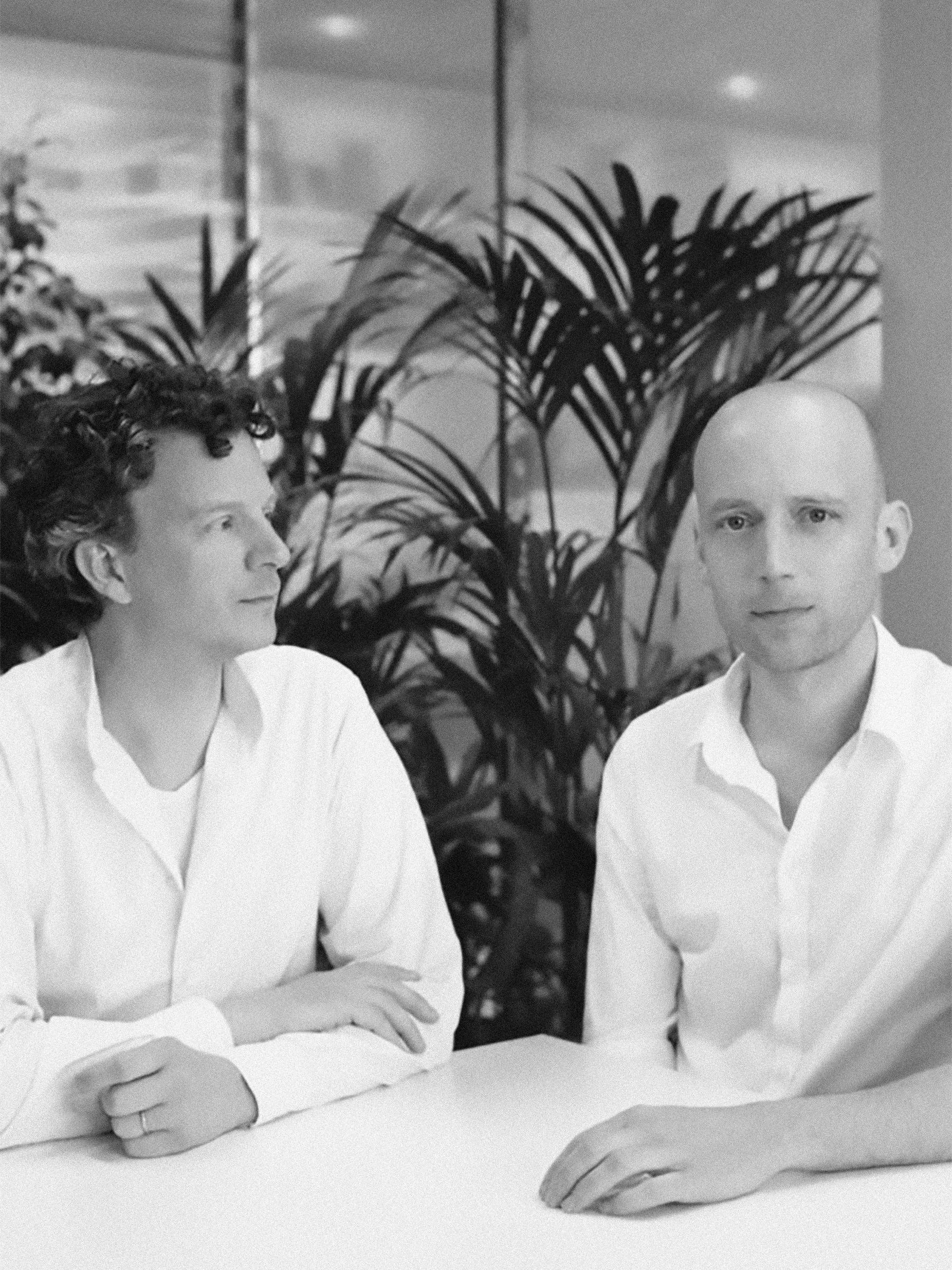
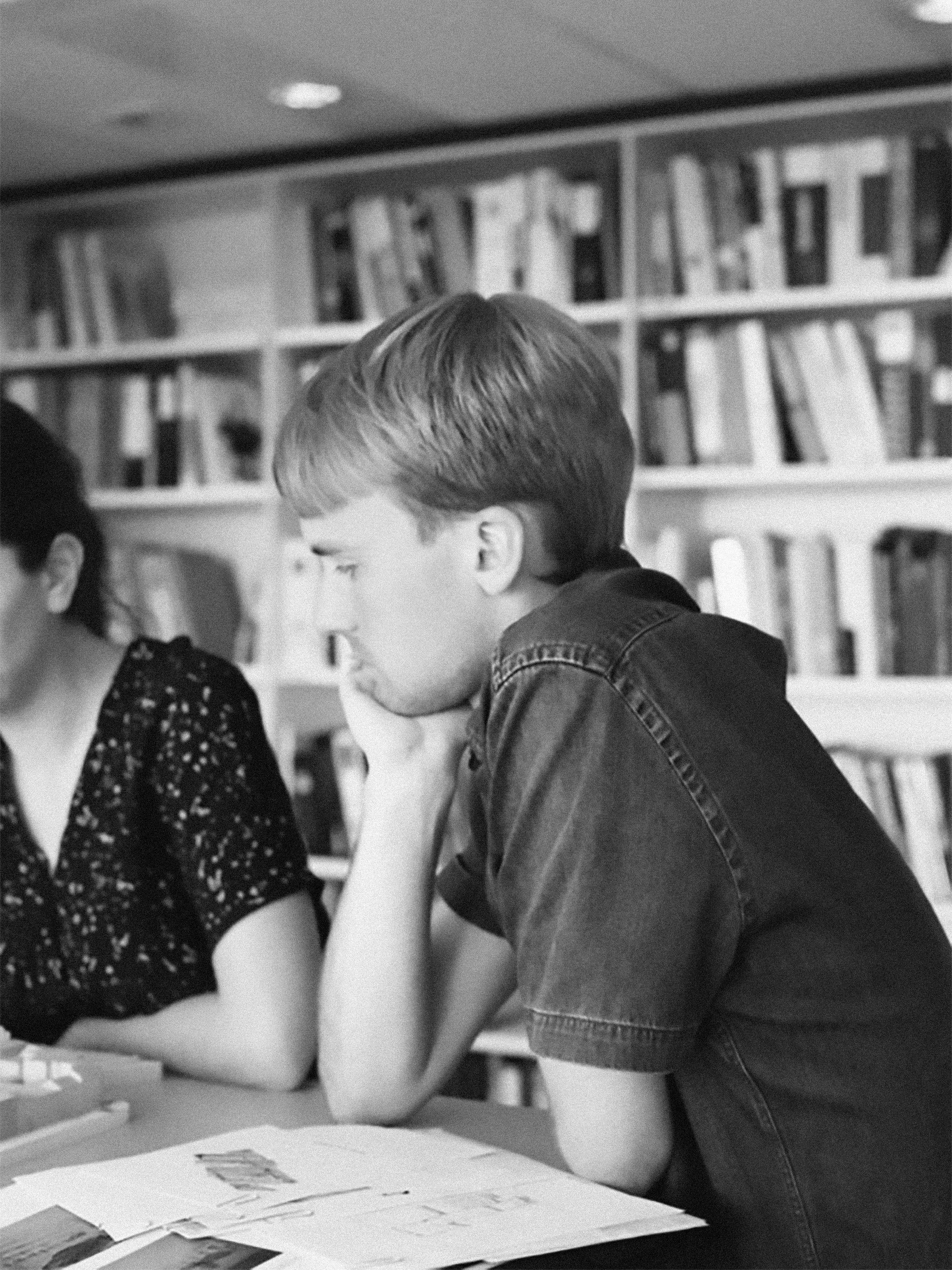
Can we start by talking about your current Brussels-based projects?
The projects range in a variety of scale, the smallest one being something we recently won: converting a farm in Anderlecht, on the outskirts of the city, into a public space. In turn, our grandest project is the redevelopment of the World Trade Center skyscraper complex in the Northern Quarter, boasting a whopping space of 100.000m². Our end goal is to transform it into mixed-use buildings, not only for offices, but also for housing and other initiatives. Adjacent to that, we’re developing an urban plan for the Brussels-West Station in Molenbeek. Truth is, 51N4E’s scope used to be primarily centred on Flanders, Albania and France, but as of the last three or four years we’ve shifted our focus to Brussels. What’s more, we’ve truly managed to expand our engagements here, partly thanks to a changing, more open-minded climate.
Why Brussels?
We’ve been working from Brussels for two decades now, so when it comes to choosing a home base, Brussels is a no-brainer, especially since it’s a rather complex, rich, diverse and multicultural city. A city where everybody and nobody feels at home, something very attractive to us as architects. In fact, there was very little work to be found here at the start – we felt that the City was not ambitious enough in its vision, and too fragmented in its approach in initiating and organising projects. We were eventually able to run our own projects though, such as De Lork in Saint-Gilles/Sint-Gillis, a residential complex for disabled people. Another example is our Brussels 2040: Three visions for a metropolis research project, which was a real turning point for us as an architecture firm.
Was this change in the political climate thanks to your clients, both public and private?
Yes – Olivier Bastin, Brussels’ very first bouwmeester was more concerned with the city as a whole than just its buildings, something we had been engaged with for a long time ourselves. Before, our pitches were often assessed through a set of criteria that we didn’t agree with at all. We would receive absurd criticism, while the common trend used to be highly focalised on working in a specific style, an approach we did not support whatsoever. Sure, style is important, but it’s far from an absolute. All of a sudden, working together became a viable option.
Did the office adapt itself to the criticism and the criteria that were set?
No – what we found to be pertinent and promising was suddenly recognised in a less categorical, more open-ended manner. And not to forget, the Brussels-Capital Region was redefining itself politically at the time. Our Brussels 2040 project, studying the areas outside of the Region, is a good example: previous maps of Flanders or the Brussels-Capital Region seemed to insinuate that there was nothing lying outside of the Region. Yet suddenly the relationship between the Region and its peripheral zones was reoriented, thus growing in importance. The final result was a book with a critical overview and three visions courtesy of KCAP, Studio Associato Secchi Viganò and 51N4E. The fact that we were selected to participate in such a study was no coincidence. Local architectural practices in Brussels had been stuck in this singular vision focussing solely on specific neighbourhoods for far too long. During the 80s, the municipalities made large investments which did produce some quality, but also embodied the denial of a complex reality. Brussels’ many neighbourhoods have an abundance of interconnecting infrastructure made up of layers and, in our view, it’s precisely this interplay which brings in new potential – layers operating on different scales and on the outskirts of the city.
Do you expect Brussels to change in the future?
I think it will, yes. Especially in the way civil movements position themselves in relation to government entities and designers. During the 70s, civil movements were gigantic, dynamic and radical – as if that was the only attitude they could take, which very well may have been the case. In the meantime, Brussels was also a caricature of top-down policymaking. But this has changed. There are many more alliances now, like the workshop in December 2017 to rethink the Petite Ceinture/Kleine Ring belt, for example. Citizens were invited by the civic movement BYE BYE to think about the future of the ring together with the city’s designers and urban planners, eschewing the usual practice of calling for tenders to be submitted. Protesting is arguably still necessary in some cases, but thankfully such anti-attitude dynamics have dissolved.
To what extent has your architecture practice evolved in relation to changing conditions, such as the environment? Did this bring about a new way of designing?
Yes. We recently moved into the WTC1 tower in the Northern Quarter. And rather than change the already present infrastructure, we’re more interested in making people aware of change by acknowledging existing qualities and incorporating new qualities into our work space. For instance, introducing greenery – plants and rooftop gardens – to drastically transform the office. Having a natural and healthy environment was not a priority 20 years ago, so in that sense an important mental shift is currently taking place.
Is this also a shift which is taking place within your own practice, or is it more dependent on the client?
It depends. It’s generally become widely accepted and appreciated. I can recall a university professor-cum-ecologist who would try to convince all of his students that ecology was a matter of importance, and that cities are in essence nature, rather than its antithesis. That you don’t have to choose between nature and urbanity, and that it’s precisely this co-existence which is so exciting. He was a lone wolf, and I didn’t understand him at the time, nor really see the point.
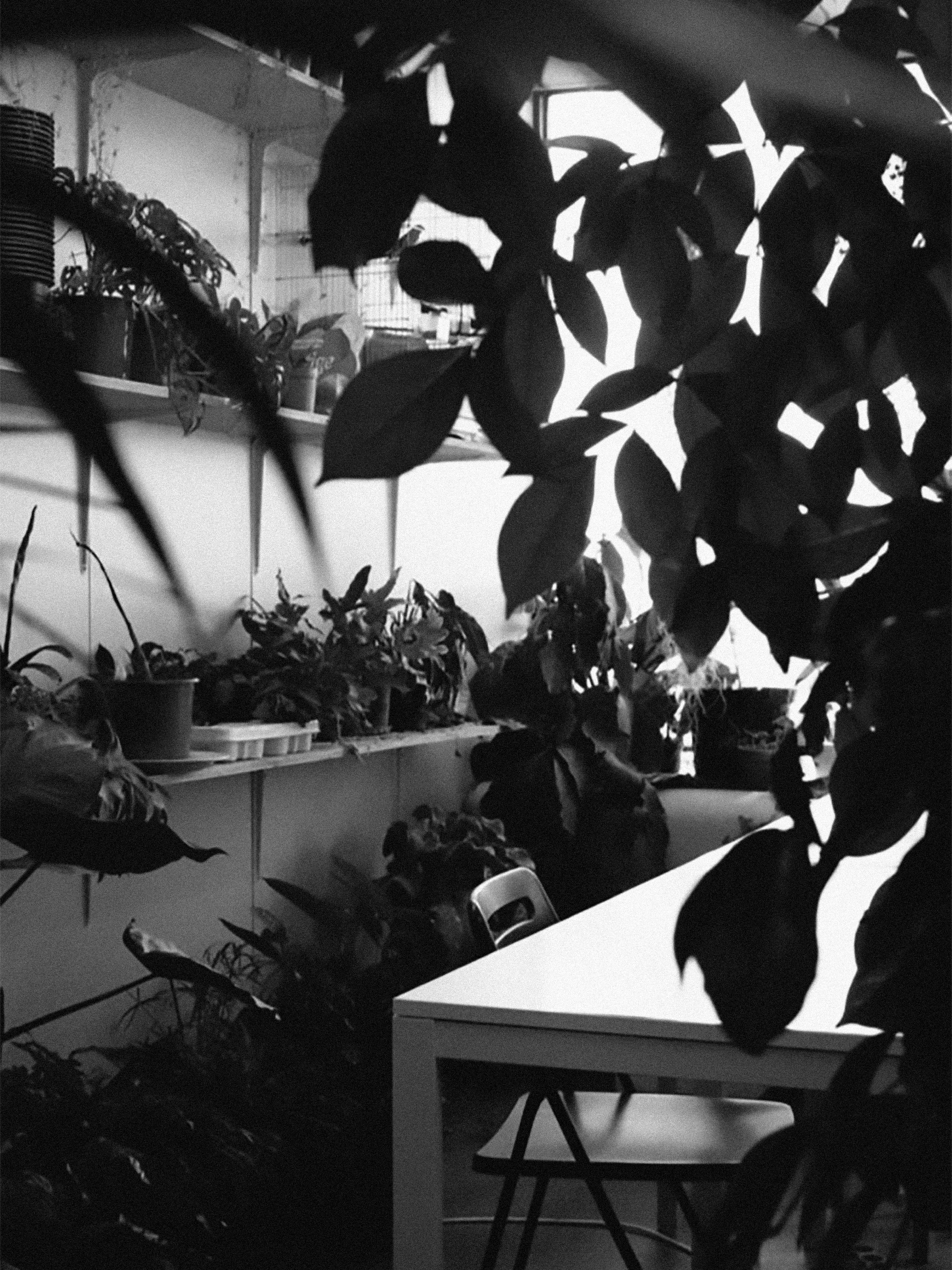
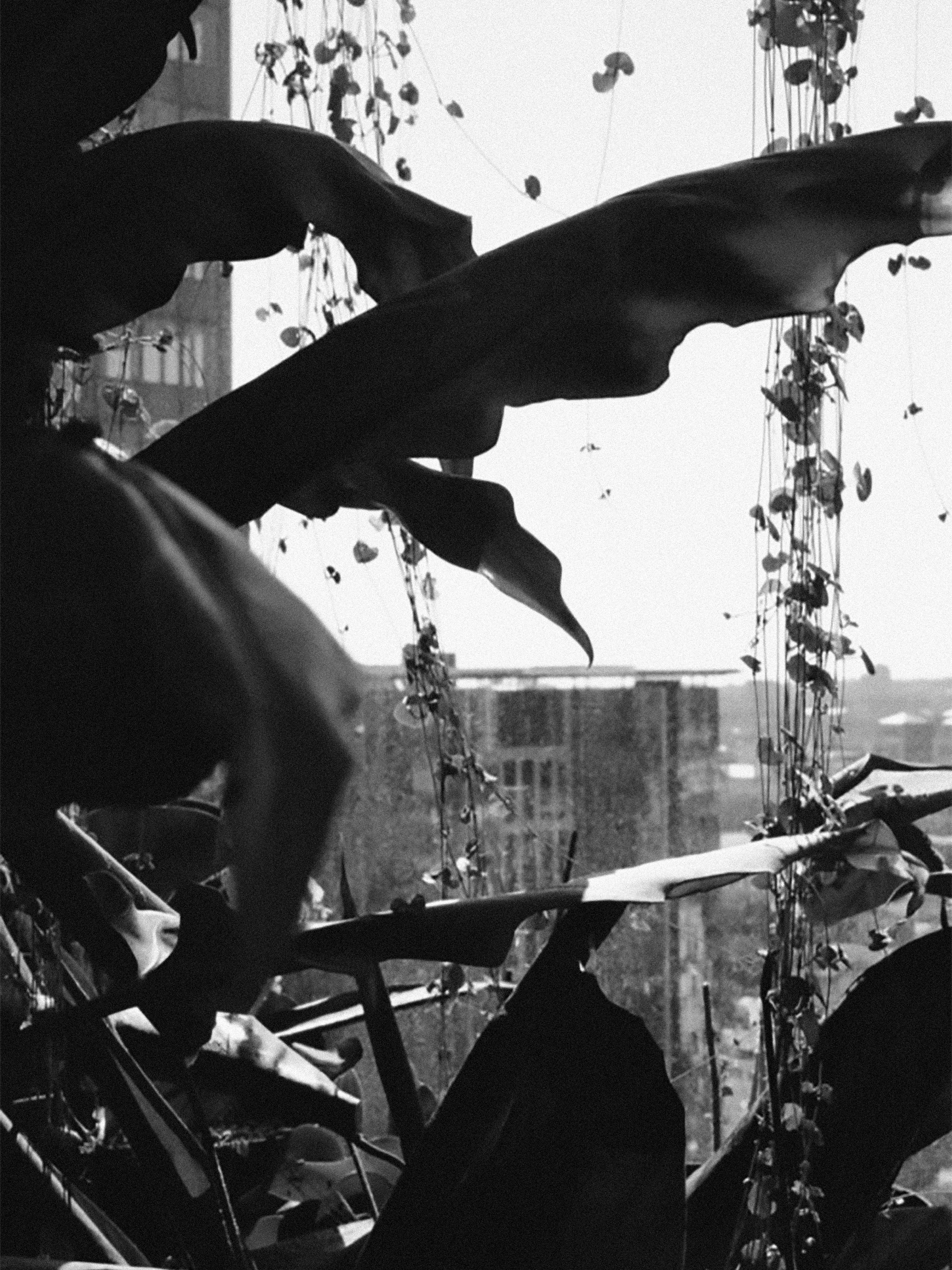
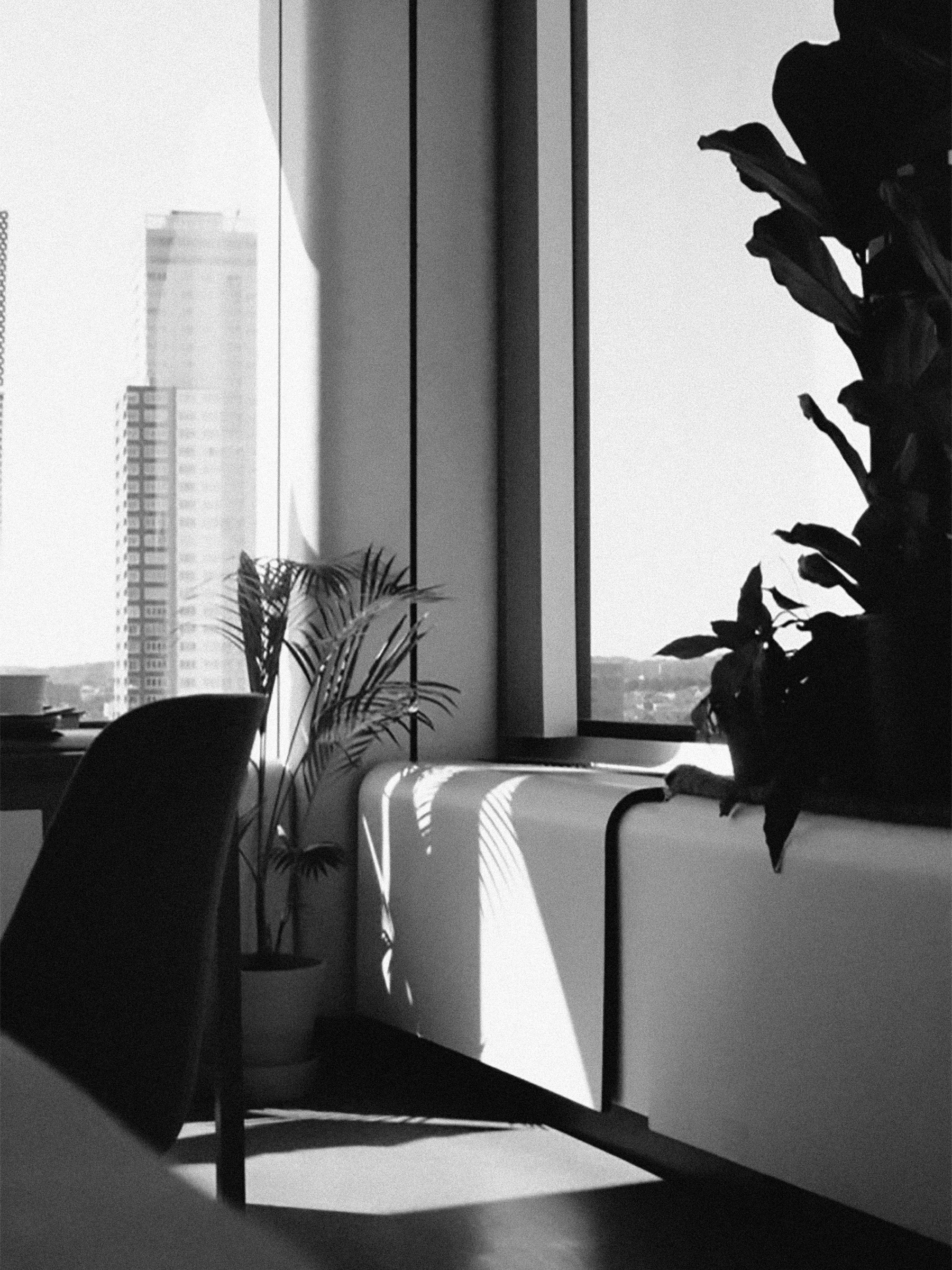
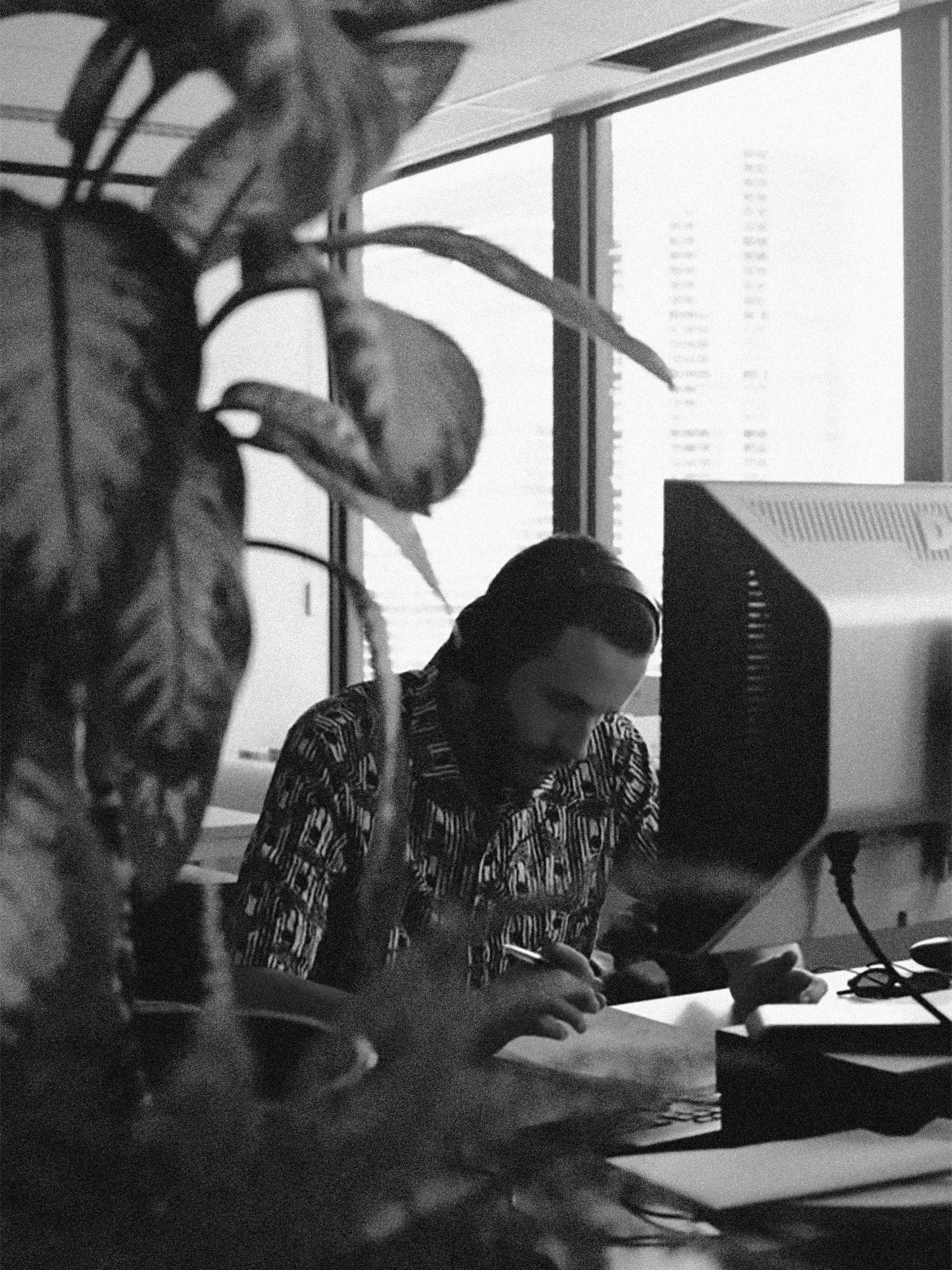
I do think it’s safe to say that the general consensus and public awareness on these pressing urgencies are changing. The Internet enables us to better inform ourselves and so these matters spread throughout society.
Well, green used to be perceived as something external to the city. A place to escape to – almost like something one could possess. This isn’t the case in urban metropolises however, as green spaces in cities tend to have a more communal quality to them, which makes things more complex, but also richer in a way.
Do you think green issues are limited to certain population groups? Or can it appeal to everybody; can everybody have their say?
Well, take allotment gardens for example, which never disappeared – they have always existed and remain very popular. And you can’t say that they’re solely the preserve of hipsters or yuppies, for lack of a better word, as they truly appeal to all layers of society. Having said that, people need to learn to appreciate greenery – something I noticed clearly when we introduced it into our office. It wasn’t so much an issue of installing plants, as it was a full-on investment to incorporate a green environment into a corporate space. The result was an overwhelming environment: an experience which you can smell and feel. Its impact is enormous, and it works. Attending a talk or reading a pamphlet is simply not enough. Such experiences need to be set up in order to see and appreciate these special qualities, and this is precisely our starting point. Perhaps somewhat ironically, city planning rarely evolves beyond the preliminary planning phase, thereby postponing the realisation of the project. Of course, plans need to be made – but things also need to be tested out at an early stage. This approach is already being adopted in many cities. Humans are highly adaptable creatures: when change is created, people will immediately organise themselves accordingly. In other words, people are very flexible in their daily lives, and not so much in their thinking.
How is this notion of flexibility illustrated in your architectural practice?
In the past, projects were developed in a very sequential manner, going from big and abstract to small and concrete. An approach we still try to abide to, but now also uphold with open-ended projects and debates. To give you an example, a variety of tests were conducted while the Northern Quarter’s redevelopment project was still in its planning phase, underlining the capacity to approach the project from a more flexible point of view. I’m convinced that you can change the environment completely without first having some profound plan, and with an evolving element of simultaneity instead. The simultaneity of the working actors, where nobody is actually taking the lead, and the simultaneity of tests, conversations and partners. The challenge is to make the link between these different elements, to be less mentally occupied by projection solely and more in the combination of very real experiences. The space you live and work in becomes the project itself, and not a project “for the future” – you’re living in the project now, after all. And that’s precisely what makes a city fascinating. Brussels has an incredible potential to deal with its space in that way, more than other cities, and in that sense the Northern Quarter is very dramatic from the eyes of a city planner. In order to see concrete change, you’ll have to wait at least 30 years – but as an on-going project currently in motion, it’s an interesting playground today. And it will only improve. Brussels is saturated with many similarly undefined spaces, so seen as a living “city project”, our capital city is an ideal situation, a laboratory even.
Does Brussels’ complexity force you to take a political standpoint and to interfere on multiple levels?
I think our political system should be simplified. The challenge is not to go back to a top-down system like in certain metropolis, but to search for a simplification that would make decentralisation possible. Turning people’s initiatives into a reality, like what was done with David Van Reybrouck’s G1000 citizen-based consultation meeting in 2011.
So 51N4E’s practice is political in itself?
Yes of course. Space is very political – there’s always the ever-present question of power. Architecture is political too, and in my opinion is only interesting if you approach it as such. Though it has to be said, with that comes great responsibility, because to a certain extent, you can never do a good enough job.
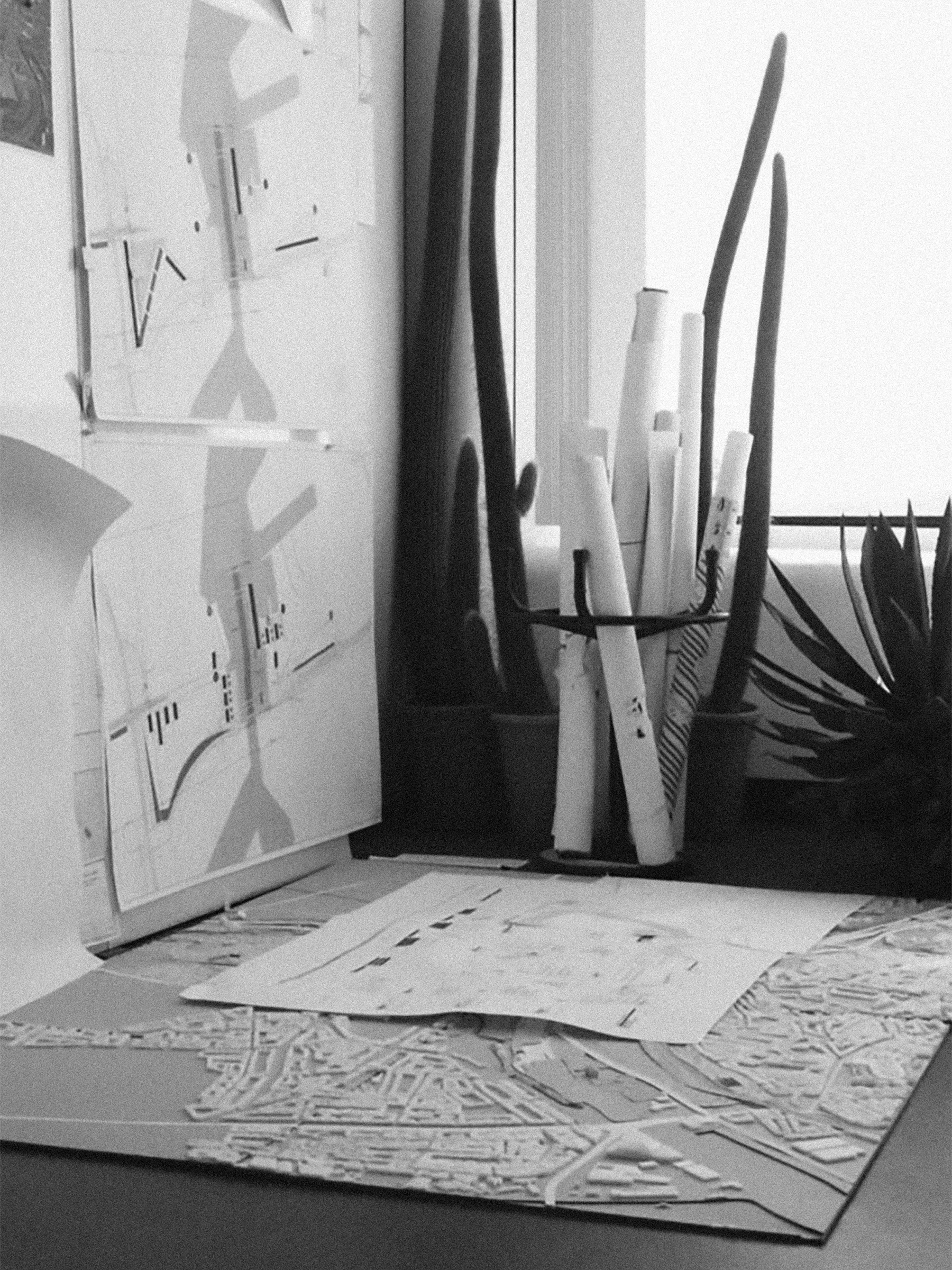

What do you mean?
There are always more possibilities to take advantage of, people to talk to. Once you start seeing it like that, the sky’s the limit. But that’s part of the game.
Perhaps that’s also a good thing, otherwise the world would become rather staid and flat. Do you adapt your politics to who you work with? Or is there a certain core ethos that always remain present?
Despite attempting to shift away from old models, current projects are still open conceptualised in old settings, which can be contrary to contemporary ambitions. For example, I feel that we sometimes run projects for developers who approach these projects too much as a pure investment product. But we can’t change reality all at once – the complexity and constellation of different voices and opinions are here to stay. I believe that development projects which attempt to invest in foundational ground floors often get run to the ground because the situation in our capital city is so complex, with no framework allowing for risk-taking. You never know whether it will work or not. And of course, as a developer, you’re not going to invest in a space that doesn’t have the promise of being rentable. Just like with the greenery in our office, you should overinvest from bottom up, creating a dynamic. This is yet to become a reality: everyone is holding back and the problem is left untouched. Sure, you can blame the developer, but that won’t achieve much. So as a city or as a society, you have to organise something that allow these ground floors to obtain enough margin. New models have to be found, and that’s something governments should commit to. For now, we’re still confronted by boundaries, rather than transcending them.
Is there a project where you succeeded in transcending said boundaries?
A café-cum-restaurant we designed on Rue de la Loi/ Wetstraat, namely WET89 – even if the business model behind it is still difficult. So yes, we did several attempts, but developing qualitative ground floors in Brussels should be a programme in itself. We organise the working space to deal with these questions both spatially and corporately as much as possible although a situation still needs to be created where many people can gather and think together, because an architect will not find the answers alone – and likewise for a developer. Or how a government can’t just whip up a plan, because they’re making demands when they don’t even know the conditions lying behind the issue. Dialogue always needs to be initiated.
In your eyes, what is the importance of the interaction between academia and architecture practice?
Academia is a place where notions and concepts aren’t instrumentalised yet; where you can still work with questions rather than with answers. As soon as you’re operating within an architecture firm, you immediately have to produce, deliver and provide answers. In turn, academia is an environment for research and discoveries. An academic practice, such as architecture, which converts theory into concrete practice revolves around a certain qualitative openness. It’s no coincidence that the LabNorth initiative was founded in the architecture studio I ran, based in Hasselt University, raising pertinent questions together with motivated and socially conscious students. Also, the fact that KU Leuven’s Sint-Lucas architecture faculty is now se led on the 24th floor of WTC1 serves more as a sign of their engagement rather than their answer. Beyond the logistical need for more space, the architecture faculty see the benefits in motivating their students in a particular way, and want to be part of this bigger picture and create a new dynamic by doing so. So in that sense, academia is a crucial institutional component of society.